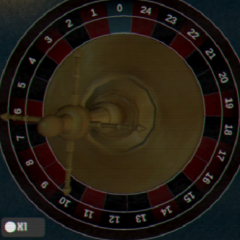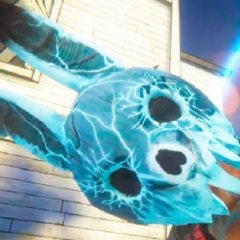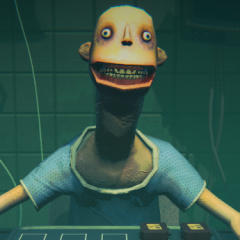Bear Haven
Bear Haven begins with the player arriving at a remote cabin where maintenance work is required. The player takes on the role of a temporary worker tasked with monitoring and repairing electrical systems at night. The location appears to be part of a family-friendly campground, but the real focus lies in surviving the shifts without being caught by roaming animatronic bears. There is no briefing, no map, and no scripted introduction. The player must begin exploring immediately and learn through direct observation and reaction.
Bear Haven begins with the player arriving at a remote cabin where maintenance work is required. The player takes on the role of a temporary worker tasked with monitoring and repairing electrical systems at night. The location appears to be part of a family-friendly campground, but the real focus lies in surviving the shifts without being caught by roaming animatronic bears. There is no briefing, no map, and no scripted introduction. The player must begin exploring immediately and learn through direct observation and reaction.
Night Watch Structure
Each night introduces a new routine. The lights flicker, alarms sound, and the power system fails. The player is required to check fuse boxes, repair cables, and keep systems running while paying attention to movement outside the cabin. If something approaches, the player must hide or avoid detection. There are no traditional menus or camera systems. Navigation happens in real time as the player walks between rooms. Decisions must be made quickly, often under pressure, without pausing or reviewing options.
The core activities include:
· Monitoring the fuse system and fixing electrical faults
· Listening for movement and sound cues through walls
· Using hiding spots to avoid incoming threats
· Exploring the building layout to memorize safe paths
· Surviving the night without running out of time or power
No Camera Feed, Only Movement
Unlike many games in its genre, Bear Haven does not offer static observation points. There are no screens to check or maps to rely on. Instead, the player must physically walk through the space. This means every check comes with a risk. Running to a fuse box may expose the player to an encounter. Staying in one place too long increases the chance of being caught. Movement must be timed with the behavior of the bear characters, whose paths vary each night.
Sound and Navigation
Sound plays an essential role. The player must pay attention to footsteps, door creaks, and mechanical noises. These cues offer the only early warnings of approaching danger. Lights sometimes fail completely, forcing navigation in the dark. Each action has consequences. Fixing a system may trigger noise, drawing attention. The player must learn when to move, when to wait, and when to hide. There is no tutorial or warning system, and everything must be learned by repetition.
Looped Progression
Bear Haven is designed as a series of escalating nights. Each one becomes more difficult, with new behaviors from the bears and less predictable failures in the electrical system. The structure does not reset fully between attempts, meaning previous knowledge can be used for future survival. There are no weapons or offensive tools. The entire game is about awareness, avoidance, and endurance. Completion is not guaranteed, and progression is based on managing the unknown with limited time and options.














Comments